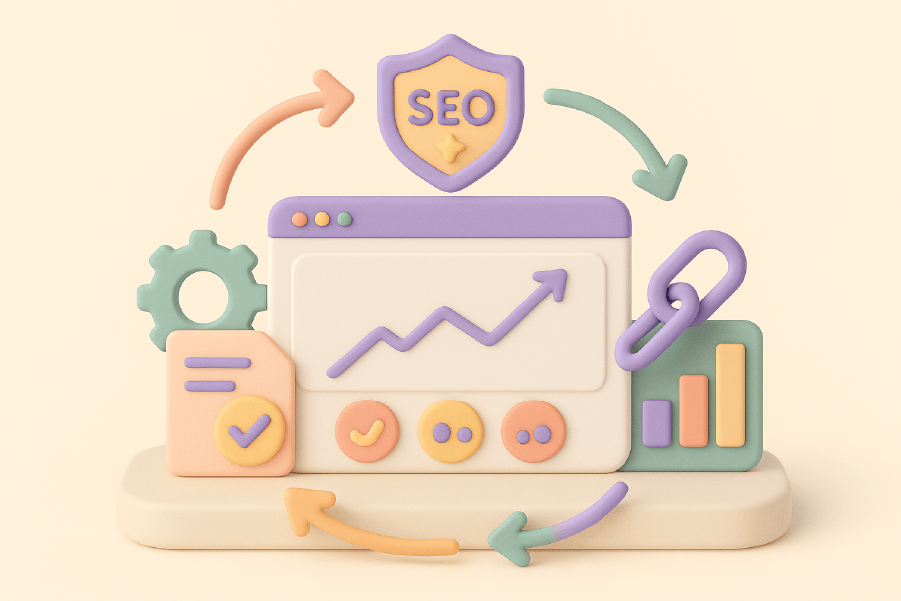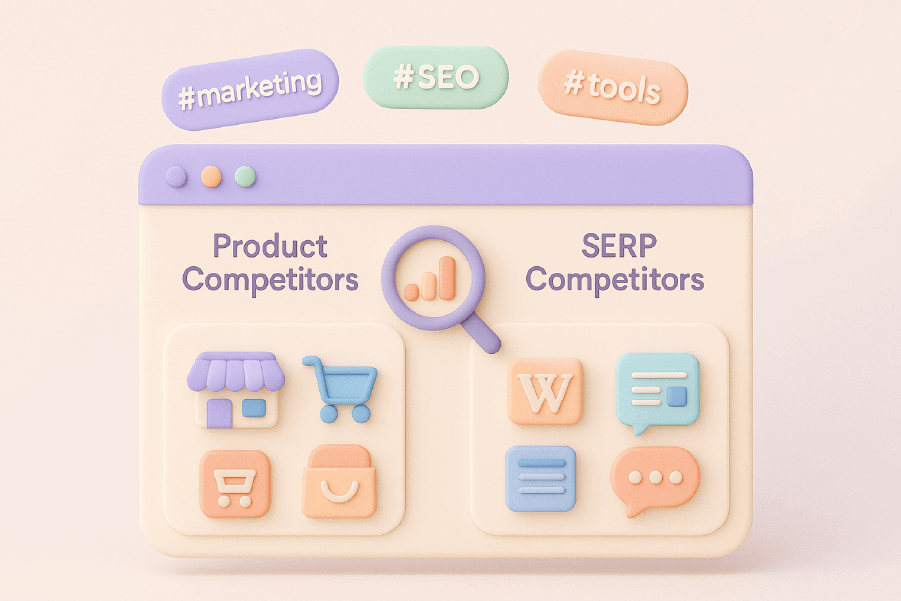Wondering what the 5 P of marketing are and how they can help your business?
The first known mention of the 5 Ps of marketing dates back to the 1940s and was originally presented by Prof. James Culliton. Professor Neil Borden later expanded on Culliton’s ideas, helping to shape the foundational aspects of marketing strategy and popularizing the 4 P’s, with the addition of a fifth P emphasizing the importance of understanding people in marketing.
This article covers Product, Price, Place, Promotion, and People, and provides strategies to effectively use them in your marketing plan.
Understanding the 5 P’s of Marketing

The 5 P’s of Marketing—Product, Price, Place, Promotion, and People—are the cornerstone of any successful marketing strategy. These elements, often referred to as the marketing mix, provide a structured approach to meeting customer needs and gaining a competitive advantage. Establishing a framework through the 5 P’s of marketing is crucial for strategically guiding businesses in meeting their marketing objectives. Manipulating these parameters enables businesses to effectively respond to market demands and stand out from competitors.
The concept of the 5 P’s dates back to the 1940s, with the first known mention credited to Professor James Culliton’s work, demonstrating its enduring relevance in marketing. Originally conceived to help businesses navigate the complexities of the market, the 5 P’s have evolved to accommodate modern marketing challenges. Today, they serve as a guide for both new and experienced marketers, helping them launch new products and refine existing offerings.
Considerations in the marketing mix, particularly focusing on the place element, are essential. This includes distribution channels, logistics, market share, and customer browsing habits, which are crucial for determining the most effective platforms for promoting products.
Understanding each of the 5 P’s is crucial. ‘Product’ encompasses both goods and services that a business offers, while ‘Price’ involves setting the right value for these offerings. ‘Place’ focuses on distribution channels and accessibility, ‘Promotion’ deals with communicating the brand message, and ‘People’ highlight the human element in marketing. Together, these elements form a cohesive strategy that can drive business success.
Effective utilization of the 5 P’s can lead to a stronger competitive advantage. Continuously refining and adapting these elements helps businesses better meet customer expectations and stay ahead in the market competition. The following sections will delve deeper into each ‘P’, providing you with detailed insights and practical examples of how to apply these principles in your marketing efforts.
Product – Crafting the Perfect Offering

Creating the perfect product starts with understanding customer needs, preferences, and the benefits your product offers. Recognizing the needs that exist in the market is crucial, as your product decisions must align with what your target market desires. Customers are more likely to engage with products that they feel are tailored to their specific needs, making this an essential aspect of your marketing strategy.
Product decisions encompass various factors including design, functionality, packaging, and warranty. Each of these elements plays a crucial role in how the product is perceived by the market. For instance, a well-designed product that is both functional and aesthetically pleasing can attract more customers. Similarly, offering warranties can provide a sense of security and trust, encouraging customers to make a purchase.
In the case of smartphone sales, third-party providers often bundle phone contracts with additional products like cases and screen protectors to enhance value and consumer reassurance when purchasing a high-ticket item. This indicates that accessories are an integral part of the purchasing decision, contributing to the overall package offered to consumers.
Packaging is another critical component of product decisions. It not only protects the product but also serves as a powerful marketing tool. Eye-catching packaging can draw customers’ attention and convey the brand’s message effectively. Additionally, unique packaging can differentiate your product from competitors and create a memorable customer experience.
Real-world examples highlight the importance of product decisions. For instance, a local café might differentiate itself by offering unique menu items that cater to specific dietary preferences, thereby attracting a niche audience. Similarly, an e-commerce fashion brand might focus on trendy product lines that resonate with current market demands, ensuring they stay relevant and appealing to their target demographic.
Understanding customer needs and positioning in the market can help your business grow, fostering development through strategic product offerings and staff training.
Price – Setting the Right Value

Setting the right price for your product is a balancing act between affordability and perceived value. To correctly price your product, you need to decide on strategic pricing by analyzing competitors’ prices and understanding market dynamics. Various pricing strategies can help you achieve this balance. Cost-plus pricing, for instance, involves adding a specific markup to the cost of production, ensuring that you cover your costs and make a profit. On the other hand, value-based pricing sets prices according to the perceived value of the product to the customer, rather than on production costs.
Penetration pricing is another effective strategy, especially for new entrants in the market. Setting lower initial prices helps businesses attract customers and quickly gain market share. Dynamic pricing allows businesses to adjust prices based on market demand and external factors, such as competitor pricing, ensuring they remain competitive.
Price promotion is a key aspect of the broader ‘5 P’s of Marketing’. It emphasizes how strategic pricing decisions, including discounts and sales, can influence customer behavior and enhance a business’s market position.
Pricing also plays a crucial role in brand positioning. Whether you position your business as a budget-friendly option or a luxury brand, your pricing strategy will influence consumer perceptions. Strategic pricing methods, such as offering discounts for bulk purchases or implementing tiered pricing, can enhance customer loyalty and cater to different customer segments based on their willingness to pay.
Components of the price element include the advertised price, discounts, sales, credit terms, and payment arrangements. Each of these components should be carefully considered to ensure they align with your overall marketing objectives and provide value to your customers. Setting the right selling price not only attracts customers but also builds long-term relationships based on trust and value.
Place – Distribution and Reaching Your Customers Effectively

Reaching your customers effectively involves choosing the right distribution channels and ensuring product availability at the right place and time. Accessibility to the product at the right location—whether through a retail store, online platforms, or pop-up events—plays a crucial role in customer experience and purchasing decisions. Digital technology has revolutionized distribution methods, enabling businesses to connect directly with consumers through e-commerce platforms. This direct distribution approach often results in lower costs and greater control over the customer experience.
Distributors play a crucial role as marketing partners, influencing pricing strategies and consumer perceptions through competitive pricing and guarantees.
Indirect distribution, involving intermediaries such as wholesalers and retailers, can complicate the distribution process but also extend your reach. The efficiency of your distribution system is critical for meeting consumer expectations, particularly in sectors like e-commerce where timely delivery is paramount. Evaluating and improving your service levels, including logistics and distribution channels, can significantly impact customer satisfaction and retention by enhancing convenience.
Location is another vital aspect of the ‘Place’ element. For brick-and-mortar businesses, choosing a prime location with high foot traffic can enhance visibility and customer acquisition. For instance, a café located in a bustling area is more likely to attract walk-in customers. Online businesses, on the other hand, must focus on digital accessibility and user-friendly interfaces to ensure customers can easily find and purchase their products.
Promotion – Communicating Your Brand Message

Promotion is all about communicating your brand message and engaging with your target audience. Various promotional activities, including advertising, public relations, personal selling, and direct marketing, play a crucial role in increasing brand awareness and driving customer engagement. Each of these methods can be tailored to suit different marketing strategies and objectives.
Effective promotional strategies often include compelling calls to action (CTAs) that encourage immediate consumer response. Thinking outside the box for promotional strategies can lead to innovative CTAs like “call now” or “visit today,” which prompt quick action and drive conversions. Creating a sense of urgency with time-limited offers can also make CTAs more compelling. Testing CTAs through A/B testing helps identify the most persuasive options, ensuring your promotional efforts yield the best results. Sponsorship, including event sponsorship and media sponsorship, is also crucial for promoting products and enhancing brand visibility.
Modern promotional methods leverage digital platforms, including social media marketing and influencers partnerships, to reach a broader audience quickly. For example, tech startups often use targeted social media campaigns to build awareness and attract early adopters. Similarly, eco-friendly fashion brands use Instagram ads, influencer marketing, and sponsorships to enhance their visibility and credibility.
People – The Human Element in Marketing

The ‘People’ element emphasizes the importance of customer service and employee engagement in marketing. Investing in customer service training can significantly enhance employee satisfaction, leading to better retention rates and improved customer interactions. Empathy and active listening are essential skills for effectively addressing customer concerns and turning challenging interactions into positive experiences.
Consideration of the needs and behaviors of both staff and customers is crucial in shaping how a business develops and markets its offerings. Well-trained and personable staff can significantly enhance the overall customer experience. For instance, friendly and knowledgeable employees in a café can create a welcoming atmosphere that encourages repeat visits.
Marketing strategies should also focus on hiring and motivating competent staff, as they play a crucial role in executing marketing plans and creating a positive brand image. Well-informed sales teams can build strong customer relationships, reduce churn rates, and contribute to the long-term success of the business. Continuous training and development programs can improve staff performance and ensure they stay updated with the latest market trends.
Modern Examples of the 5 P’s in Action
To illustrate the practical application of the 5 P’s, we’ll explore three modern examples: a tech startup, a local café, and an e-commerce fashion brand. Adding value through differentiation is essential in these examples to enhance the 5 P’s of marketing.
These case studies will show how businesses effectively utilize the 5 P’s to achieve their marketing objectives, adapt to market trends, and meet customer needs. Recognizing key areas within their strategy that require attention is crucial to optimize performance and meet customer needs effectively. Alternatively, businesses can view the 5 P’s as either essential components or adjustable parameters in their marketing strategies.
Conducting thorough assessments, such as break-even analyses or return on investment analyses, is also important to understand the relationship between promotion costs, customer value, and the effectiveness of marketing strategies.
Example 1: Tech Startup
A tech startup developed a user-friendly app tailored to customer needs, demonstrating the importance of understanding and addressing specific market demands. To attract early users, the startup employed competitive pricing strategies, such as offering introductory discounts and flexible credit terms included.
The startup also implemented digital promotion through targeted social media campaigns, building awareness and generating interest in the app. Online distribution channels ensured the app was easily accessible to potential users, while prioritizing customer support enhanced the user experience and facilitated feedback for future updates.
For further learning, we encourage continued reading of additional resources and guides to deepen your understanding of effective marketing strategies and competitive analysis.
Example 2: Local Café
A local café differentiated itself by creating unique menu items that appealed to local tastes and dietary preferences, setting it apart from competitors. Understanding the challenges the company faces and emphasizing company values can drive effective marketing strategies. Strategic pricing ensured that the menu items were affordable while maintaining high quality, attracting a diverse customer base.
Community events were organized to promote the café, enhancing local engagement and visibility. The café’s prime location contributed significantly to foot traffic, making it easily accessible to customers. Friendly staff played a crucial role in creating a welcoming atmosphere, encouraging repeat visits and fostering customer loyalty.
Example 3: E-commerce Fashion Brand
An e-commerce fashion brand focused on trendy product lines to attract a youthful demographic, ensuring their offerings stayed relevant and appealing. Tiered pricing strategies catered to different customer segments effectively, providing options for various budgets.
Influencer marketing was leveraged to enhance brand visibility and reach a broader audience, while efficient shipping options improved customer satisfaction and retention. Excellent customer service, including hassle-free return policies, was established as a priority to build loyalty and trust with shoppers.
Evolving Beyond the 5 P’s
While the 5 P’s of Marketing provide a solid foundation, the marketing landscape is constantly evolving. Marketers sometimes expand this framework to include additional elements such as Process and Physical Evidence, creating the 7 P’s of Marketing. The ‘Process’ refers to the delivery of products and services, ensuring a seamless and efficient experience for customers. ‘Physical Evidence’ includes tangible proof of a product’s availability and quality, such as free trials or customer testimonials.
Adapting marketing strategies to ensure that the product’s value is understood is crucial, especially in contexts where customer awareness may be low.
As user behavior, digital tools, and market trends change, the 5 P’s must add new elements to adapt accordingly to stay relevant in a growing market. For instance, the rise of digital marketing has transformed how businesses approach ‘Place’ and ‘Promotion’. Digital platforms and social media marketing are now integral to reaching and engaging with customers. Embracing these changes allows businesses to stay ahead of the curve and meet customer needs effectively.
Looking forward, marketers must be proactive in evolving their strategies. Incorporating new elements and continuously refining the traditional 5 P’s can lead to substantial improvements in marketing performance. By staying informed about the latest trends and tools, businesses can develop innovative strategies that drive success in a dynamic market. Marketers, as mixers of ingredients, play a crucial role in shaping these strategies and ensuring they resonate with consumer behavior.
Ready to take your marketing strategies to the next level?
Explore strategic brand development and effective market positioning with LIBRA 4 humans. Our team of experts is here to provide personalized marketing solutions tailored to your needs.
Book a call with us today and start building a marketing plan that drives results and enhances your customer experience, built for success. Read more about strategic brand development and effective market positioning to gain deeper insights into these essential marketing strategies.
Summary
The 5 P’s of Marketing—Product, Price, Place, Promotion, and People—serve as a comprehensive framework for developing effective marketing strategies. By understanding and leveraging the range of variations in product offerings and pricing structures within each of these elements, businesses can meet customer needs, differentiate themselves in the market, and achieve their main marketing objectives. From crafting the perfect product to setting the right price, reaching customers effectively, communicating your brand message, and emphasizing the human element, the 5 P’s offer a roadmap to marketing success.
As the marketing landscape evolves, it’s essential to adapt and expand beyond the traditional 5 P’s. Embracing new elements like Process and Physical Evidence, and staying informed about digital trends, can lead to substantial improvements in marketing performance. By continuously refining your strategies and staying ahead of market trends, you can build a strong, competitive brand that resonates with your target audience. Now is the time to apply these insights and take your marketing efforts to new heights.
Frequently Asked Questions
What are the 5 P’s of Marketing?
The 5 P’s of Marketing—Product, Price, Place, Promotion, and People—are essential elements in creating a successful marketing strategy that addresses customer needs and business goals. Understanding these components can significantly enhance your marketing efforts.
How do the 5 P’s of Marketing benefit businesses?
The 5 P’s of Marketing help businesses effectively respond to market demands and differentiate themselves from competitors, ultimately leading to a competitive advantage. By utilizing this structured approach, companies can enhance their overall marketing strategy and drive better results.
What is the importance of customer service in the 5 P’s framework?
Customer service is essential in the ‘People’ element of the 5 P’s framework as it significantly enhances the customer experience, fosters loyalty, and builds strong customer relationships. Prioritizing exceptional customer service can lead to increased satisfaction and repeat business.
How can businesses evolve beyond the 5 P’s of Marketing?
To evolve beyond the 5 P’s of Marketing, businesses should integrate elements such as Process and Physical Evidence while leveraging digital tools and adapting to current market trends. This approach ensures a more comprehensive marketing strategy that resonates with today’s consumers.
Why is pricing strategy important in marketing?
Pricing strategy is crucial because it directly impacts consumer perceptions, brand positioning, and competitive advantage in the market. Effectively implementing various strategies can help ensure that a business meets its financial objectives and stands out in its industry.






